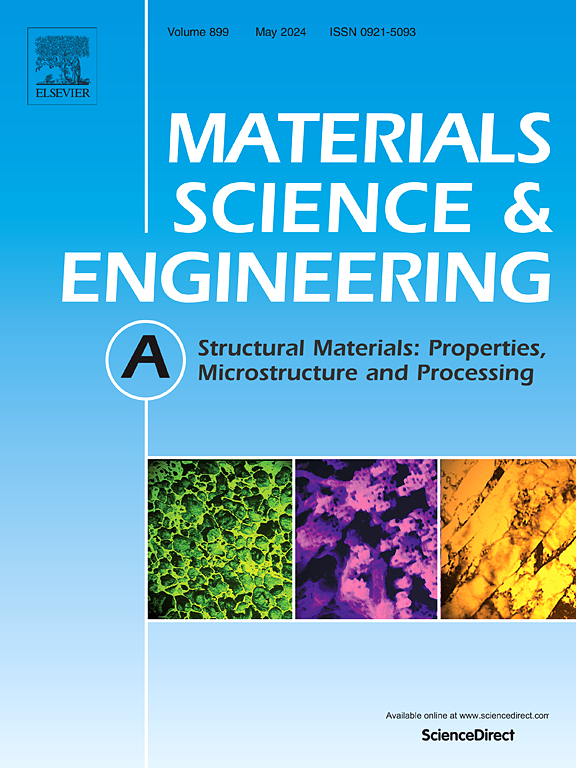条形铸造10% SiC/6063复合材料的组织性能演变及增韧机理:实验与模拟
IF 6.1
2区 材料科学
Q1 MATERIALS SCIENCE, MULTIDISCIPLINARY
引用次数: 0
摘要
采用带铸工艺首次制备了10% SiC/6063复合材料。采用实验和有限元方法对冷轧前后的组织演变和增韧机理进行了研究。由于SiC颗粒的晶粒细化和位错阻碍,复合铸带的硬度和强度均高于6063铝合金。经冷轧后,复合材料的强度提高了33 MPa,伸长率从9.7±3%提高到33±5%,提高了240.2%。延伸率的显著提高主要是由于密集堆积表面的<;111>;//RD{立方}织构占48.5%,为位错滑移提供了有利条件,使材料通过位错运动协调变形。模拟和KAM结果证实,SiC颗粒周围存在应力集中,可以分担应力,阻碍裂纹扩展。这相当于复合材料冷轧后的低角度晶界达到97.7%。与6063合金不同,复合材料的再结晶体积分数提高到5.15%,具有均匀连续的再结晶特性,使应力均匀分散。这使得复合材料的结构更加均匀,降低了局部应力,提高了综合力学性能。本文章由计算机程序翻译,如有差异,请以英文原文为准。
Microstructure and properties evolution, toughening mechanism of 10 % SiC/6063 composite fabricated by strip casting: Experiment and simulation
The 10 % SiC/6063 composite was prepared by strip casting technology for the first time. The microstructure evolution and toughening mechanism before and after cold rolling were investigated by experimental and finite element methods. The hardness and strength of the composite cast strip were higher than that of 6063 aluminium alloy due to grain refinement and dislocation obstruction of SiC particles. After cold rolling, the strength of the composite material increased by 33 MPa, with a substantial 240.2 % increase in elongation from 9.7 ± 3 % to 33 ± 5 %. The significant increase in elongation is mainly attributed to the high proportion of <111>//RD {Cubic} texture (48.5 %) of the densely packed surface providing favourable conditions for dislocation slip, allowing the material to coordinate deformation through dislocation motion. The simulation and KAM results confirm that there is stress concentration around the SiC particles, which can share the stress and hinder the crack propagation. This corresponds to the low angle grain boundary of the composite material after cold rolling up to 97.7 %. Different from 6063 alloy, the recrystallisation volume of composite materials fraction increased to 5.15 % and possessed uniform continuous recrystallisation characteristics to uniformly disperse the stress. This makes the composite material structure more uniform, reduces local stress, and improves comprehensive mechanical properties.
求助全文
通过发布文献求助,成功后即可免费获取论文全文。
去求助
来源期刊

Materials Science and Engineering: A
工程技术-材料科学:综合
CiteScore
11.50
自引率
15.60%
发文量
1811
审稿时长
31 days
期刊介绍:
Materials Science and Engineering A provides an international medium for the publication of theoretical and experimental studies related to the load-bearing capacity of materials as influenced by their basic properties, processing history, microstructure and operating environment. Appropriate submissions to Materials Science and Engineering A should include scientific and/or engineering factors which affect the microstructure - strength relationships of materials and report the changes to mechanical behavior.
 求助内容:
求助内容: 应助结果提醒方式:
应助结果提醒方式:


